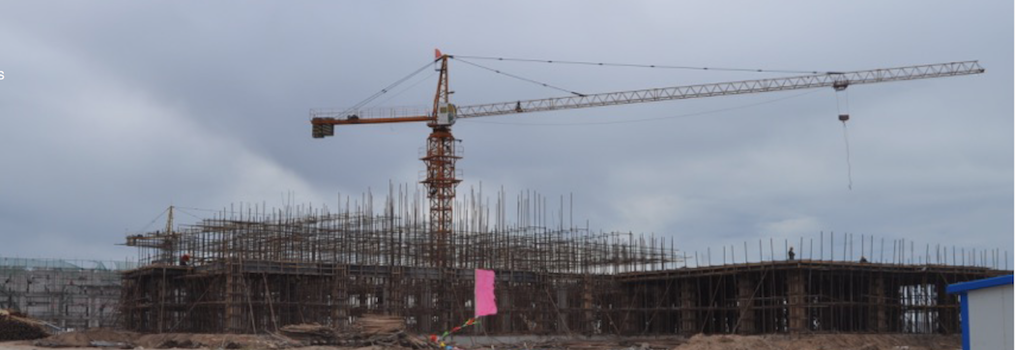
The remote border crossing that connects Mongolia and China through Bichigt (on the Mongolian side) and Zhuengadabuqi (朱恩嘎达布其, on the Chinese side) has seen an increased volume of traffic in recent years as personnel, equipment, and supplies enter Mongolia and natural resources, particularly oil from Petrochina’s oilfield in Tamsagbulag as well as zinc ore from the Mongolian-Chinese joint venture zinc mine outside the capital of Sukhbaatar aimag, are transported to China along this corridor. Despite much talk about various initiatives, there are still very few traces of infrastructural development on the Mongolian side of the border. On the Chinese side, however, our 2013 visit confirmed rumours that the anticipation of increased trade has led to massive investments in new infrastructure: a paved road and a new rail road had been but to the border crossing, just as the border point of Zhuengadabuqi sported numerous new buildings for official, business and residential (hotel) purposes. More generally, in the nearby city of Wuliyasitai (乌里雅斯太) a gigantic industrial zone for processing raw materials (coal, etc.) had been planned and was already partially under construction at the time of our visit, all of which was part of part of the so-called Dongwuqi Industrial Investment Programme (the city of Wuliyasitai being the administrative centre of the banner of Dongwuzhumumiq珠穆泌旗).
Research
The research in Zhuengadabuqi has focused on two particular aspects:
1. Infrastructural excess. One characteristic finding from both of our primary research sites in Inner Mongolia was a seemingly extreme degree of infrastructural over-investment if not downright infrastructural excess. Not only was the border point of Zhuengadabuqi virtually devoid of people on the day of our visit (while we were told that it was an usually quiet day, local shopkeepers indicated that, even on a good day, visitors and traffic across the border never got near to meeting intended capacity). The emerging industrial complex at Dongwuqi also seemed conspicuously oversized in comparison to the actual resource base of people as well as raw materials in the area; certainly, our key informant on this matters (a retired local government cadre of Inner Mongolian ethnicity) could not explain precisely where all the workers and all the raw materials needed for the new industrial zone were supposed to come from (see also below). Both cases thus called to mind other accounts about “ghost towns” elsewhere in Inner Mongolia and more generally corroborated that China's northern fringe has come to represent an extreme case of “boom-and-bust” economy as a result of, from 2009 onwards, the multi-billion US Dollar influx of cheap capital to China’s periphery in an attempt by the government to compensate for global financial crises; and, since 2012, the falling commodity prizes and the housing market crash that has hit both Inner and Outer Mongolia so hard due to their shared economic over-reliance on the extraction industry.
2. Radical sense of alienation. Another lasting impression from our 2013 trip (in Pedersen's case, the first time he had been to Inner Mongolia) was the overwhelming sense of alienation on the part of the Inner Mongolian minority. Virtually every Inner Mongolian person Pedersen spoke to, including several prominent members of the local cultural and political elite, expressed a profound degree of pessimism and resignation concerning the future, both at individual/family level and as a “people.” Expressions such as “there is nothing left for here” and “I just want my children to go abroad to have a real life” were frequent throughout these conversations; and more or less feeble and hardly convincing attempts to suggest that the mining economy and the new economic zone might open up for new employment opportunities for sons and daughters and other members of the Inner Mongolian minority were all dismissed with a sneer, “we are not part of their plans. More Chinese will just move here to do these jobs.” So strong, pervasive and moving was this sense of cultural alienation and breakdown of future options that Pedersen eventually came to share, and to a mild extent experience, his interlocutors' state of disenchantment if not depression.



